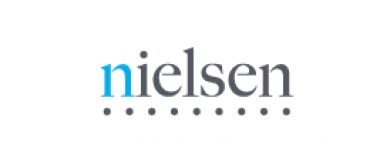
 Branded Websites Are the Second-Highest-Rated Form
Branded Websites Are the Second-Highest-Rated Form
Trust in traditional offline ad formats is still strong—especially among Millennials
The most credible form of advertising comes straight from the people we know and trust. Eighty-three percent of online respondents in 60 countries say they trust the recommendations of friends and family, according to the Nielsen Global Trust in Advertising Report released today. This level declined one percentage point from 2013 (84% in 58 countries).
Owned online channels are also among the most trusted advertising formats. Trust in advertising on branded websites increased one percentage point to 70% in 2015 as the second-most-trusted format, remaining in second place from 2013. Sixty-six percent of survey respondents indicate that they trust consumer opinions posted online, which rates third in 2015, down two percentage points from 2013. In addition, more than half of global respondents (56%) trust emails they signed up for, a level that is consistent with 2013.
While there isn’t one simple rule for maximizing advertising effectiveness in a saturated market, understanding how consumers feel about the ads served on the various media platforms they use every day is a good place to start.
“While advertisers have started to follow consumers online, about a third of online advertising campaigns don’t work—they don’t generate awareness or drive any lift in purchase intent,” said Randall Beard, President, Nielsen Expanded Verticals. “As consumers are in control of how they consume content and interact with brands more than ever, understanding ad resonance across screens is the only way to successfully drive memorability and brand lift today.”
Nielsen’s Global Trust in Advertising Survey polled 30,000 online respondents in 60 countries to gauge consumer sentiment in 19 forms of paid, earned and owned advertising mediums. The results identify the ad formats resonating most strongly with consumers and those that have room to grow.
TRUST IN TRADITIONAL ADVERTISING STILL STRONG
Despite continued media fragmentation, the proliferation of online formats has not eroded trust in traditional (offline) paid channels. TV, newspapers and magazines remain trusted advertising formats. More than six-in-10 global respondents say they completely or somewhat trust TV ads (63%), up one percentage point from 2013. Slightly fewer trust ads in newspapers (60%) and magazines (58%), which fell one and two percentage points, respectively, from two years ago.
Trust in paid online and mobile ads has stayed relatively consistent since 2013. Almost half of global respondents say they completely or somewhat trust online videos ads (48%, no change from 2013), ads served in search engine results (47%, down one percentage point) and ads on social networks (46%, down two percentage points). About four-in-10 global respondents trust online banner ads (42%, no change) and mobile advertising (43%, down two percentage points). Just over one-third say they trust mobile text ads (36%, down one percentage point).
“Brands have been steadily increasing their digital ad spend as they get increasingly comfortable with digital advertising and measurement, but TV formats still deliver the highest unduplicated reach (i.e., the ad reaches each audience member only once) of 85%-90%,” said Beard. “While digital ads can offer considerable benefits—such as precision-focused campaigns, in-flight adjustments and more creative options—moving from TV to an all-display digital plan is a bold move for any marketer. Consider a mix of both offline and online channels for the best ROI.”
TRADITIONAL FORMATS RESONATE STRONGLY WITH MILLENNIALS
Millennials (age 21-34), who came of age with the Internet, have the highest levels of trust in online and mobile formats, followed closely by Generation X (age 35-49). Half or nearly half of Millennials trust online video ads (53%), ads on social networks (51%) and online banner ads (47%). And four-in-10 Millennials (41%) trust text ads on mobile phones. But it’s not just online and mobile advertising formats where Millennials exceed the average. They also show the highest levels of trust in 18 of 19 advertising formats/channels, including TV, newspapers and magazines, and they’re also the most willing to take action on 16 of 19 formats.
“Millennials consume media differently than their older counterparts, exercising greater control over when and where they watch, listen and read content—and on which device,” said Beard. “But even if they rely less heavily on traditional channels, their trust and willingness to act on these formats remains high. While an integrated, multi-channel approach is best across all generations, it carries even more importance when reaching Millennials.”
ONLINE FORMATS MAKE IT EASY TO TAKE ACTION
Nielsen’s research shows that trust and action are clearly linked, but credibility is not always a prerequisite to purchase intent. Even lower-trust formats can be extremely effective in driving consumers to the point of purchase.
The same percentage of global respondents that trust the opinions of friends and family says they take action on these opinions at least some of the time (83% each). Similarly, self-reported trust and action are the same for branded websites (70% each).
For many paid advertising formats, however, self-reported action actually exceeds trust. That is, more consumers say they take action than find the ad trustworthy. This is particularly true for online and mobile formats. Self-reported action exceeds trust by more than double digits for ads served in search engine results (47% trust; 58% take action), ads on social media (46% trust; 56% take action) and text ads on mobile phones (36% trust; 46% take action).
“The formats where action exceeds trust by the greatest margin share a common attribute: easy access to products/services,” said Beard. “You like it, you buy it. Online and mobile formats make it exceptionally easy for consumers to live in the moment and take quick action on the advertisement. Often, consumers simply click a link and they’re directed to a place where they can receive more information or purchase the item.”
